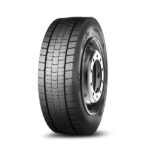Logistics and transportation play a crucial role in any business that involves the movement of goods from one place to another. Efficient logistics and transportation are critical to optimising supply chain movement and achieving business success. In this article, we will explore the key strategies that businesses can use to master logistics and transportation and optimise their supply chain movement.
Transportation
Transportation is the physical movement of goods from one location to another. Effective transportation strategies can help businesses minimise transportation costs and improve delivery times. One key strategy is to use efficient routes via industry-leading technology, such as Navman. Navman is a GPS tracking system that provides real-time location data, allowing businesses to plan efficient routes that minimise transportation costs and delivery times.
Another strategy is to always endeavour to get a backload by working alongside our client base to maximise. A backload is a return journey that a truck or delivery vehicle makes after completing a delivery. By planning backloads, businesses can maximise the use of their transportation fleet and reduce the cost per delivery.
Additionally, using a fleet that is regularly maintained and serviced can help improve the fuel efficiency of the vehicles. Euro 6 fleet are known for their fuel efficiency, and implementing these in the business will cut fuel costs significantly. Turning off idling engines is also a great strategy for cutting down fuel consumption.
Delivering On Time and In Full (OTIF) strategy is a key strategy for transportation. It involves delivering goods to the right place, at the right time, in the right quantity, and in the right condition. This strategy ensures that customers receive their goods on time and in the condition, they expect, which is critical to maintaining customer satisfaction.
Warehousing
Warehousing is the storage and handling of goods before they are transported to their final destination. Effective warehouse management can help businesses optimise their supply chain movement by improving stock management and ensuring that products are delivered just in time (J-I-T) for production to begin.
Warehouse management systems (WMS) are a critical tool for improving stock management. WMS systems automate inventory control and order management, ensuring that businesses have the right products in stock when they are needed. This helps to minimise the risk of stockouts and reduces the cost of excess inventory.
Implementing a Lean Management Strategy is also a key strategy for optimising warehouse management. This strategy involves identifying and eliminating waste in the warehouse, such as unnecessary movements and overproduction, which helps to improve the efficiency of the warehouse.
Storing buffer stock and delivering it with a just-in-time (J-I-T) strategy is another strategy for optimising warehouse management. Buffer stock is a reserve of products that are held in the warehouse to ensure that there is always enough inventory to meet customer demand. The just-in-time strategy involves delivering products to the production line just in time for them to be used, which helps to minimise the amount of inventory held in the warehouse.
Efficient processes are also critical to driving efficiencies in the supply chain. This involves reviewing and streamlining processes to ensure that they are as efficient as possible. This helps to minimise waste, reduce costs, and improve the overall efficiency of the supply chain.
Conclusion
In conclusion, mastering logistics and transportation is critical to optimising supply chain movement and achieving business success. Businesses that implement key strategies such as efficient transportation routes, backloading, maintaining a fuel-efficient fleet, and delivering goods on time and in full (OTIF) can improve delivery times and minimise transportation costs.
Effective warehouse management, such as implementing warehouse management systems (WMS), lean management strategies, storing buffer stock, and delivering just in time (J-I-T), can help businesses improve stock management, reduce inventory costs, and optimise the supply chain.
By implementing these key strategies, businesses can achieve operational excellence, minimise costs, and deliver exceptional customer service. Additionally, optimising supply chain movement can help businesses to remain competitive in their respective industries and gain a competitive advantage.
It is important for businesses to regularly review and update their logistics and transportation strategies to ensure that they are up to date with the latest trends and technologies. This involves staying up to date with industry developments, adopting new technologies, and continuously improving processes to ensure that the supply chain remains efficient and cost-effective.
Finally, businesses should also consider partnering with logistics and transportation experts who can provide guidance and support in developing and implementing effective supply chain strategies. This can help businesses to leverage the expertise of logistics and transportation professionals and gain access to the latest industry trends and technologies.
Mastering logistics and transportation is crucial for optimising supply chain movement and achieving business success. By implementing key strategies such as efficient transportation routes, maintaining a fuel-efficient fleet, delivering on time and in full (OTIF), and implementing effective warehouse management strategies, businesses can improve their supply chain efficiency and reduce costs.
Additionally, partnering with logistics and transportation experts can provide valuable insights and support in developing and implementing effective supply chain strategies.
Link: https://www.tepsgb.com/







